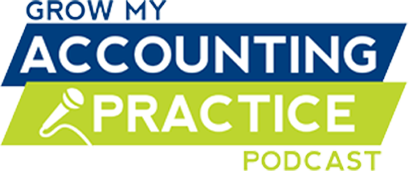In 1961, William McGuire developed a theory that he called the Inoculation Effect. He used the theory – based on the medical practice of inoculating patients to confer disease resistance – to describe the process by which we can become resistant to attempts to persuade us. It turns out that we develop resistance by being forewarned, or educated, about future attempts to persuade us. There’s ample evidence to support the theory, most notably a study of a group of children who were educated about cigarette companies’ attempts to persuade these students to start smoking – once they come of age, of course. This early education not only resulted in higher resistance to the appeal of smoking at one and two year follow-ups, but the study showed long-lasting results as well.
What does this have to do with growing a business? It means that you have to work harder to attract customers, and you may have to take a novel approach, given the fact that consumers have been assaulted by tactics like the Home Shopping Network’s countdowns – “Only three minutes left…..operators are standing by” – and consumers are more savvy and more skeptical of the attempts to manipulate their behavior.
What’s the answer? It’s absolutely revolutionary, and it’s completely contrary to what consumers expect – it’s a bit of reverse psychology, in that you’re giving folks something different. You tell the truth. Just when your prospect is expecting to be worked over, you are completely honest, and you will be shocked at the results.
Let’s take a look at some techniques in which honesty is your ticket to closing sales.
1. Use the Inoculation Effect to your advantage. When you know that your prospect is making a choice between you and your competitor, share the information you have about your competitor’s sales tactics. If you alert the prospect to the fact that “some businesses” will price their wares deceptively or will try a little bait and switch, then you’re instantly decreasing the effectiveness of those tactics on your prospects. Remember – being honest is paramount. Don’t make things up or exaggerate.
2. Explain how you’re different from the rest of the industry. Related to #1, this technique inoculates your prospect against the industry standard. This technique is brilliant if you have a point of difference from all the other guys. If you’re a caterer, maybe everyone else tacks on outrageous charges for china and flatware rental, but you’ve found that it’s always cheaper for your clients to arrange those items themselves. You’re priming them to object to those charges in other caterers’ quotes, and you’ve set yourself apart from the crowd.
3. Don’t offer more; offer less. A la carte ordering – regardless of the industry – is the new standard, and consumers are flooded with a mind-boggling array of choices. They’re used to being told that more choices are always better. Here’s the inside scoop, though: studies have repeatedly shown that too many choices can result in analysis paralysis – customers frozen into indecision by too many choices. Customers want to feel like they’re in control…but only to a certain point. Your best bet is to always offer exactly three choices. You’re the expert; use your knowledge to present your client with three good choices, rather than trying to dazzle them with everything you can do, regardless of whether it’s right for them. Buck the trend.
4. Give prospects an easy out. We’re all so used to high-pressure sales techniques, that we’re positively refreshed when that pressure doesn’t materialize. If you make your pitch, try ending by telling the prospect that you understand if they think your product isn’t a fit for them. Evidence shows that your close rate stays about the same, but here’s the really powerful part: Your clients’ confidence increases, and you eliminate buyer’s remorse. If they make the decision based on their preference, rather than because of undue pressure, then they’re happy with their choice. They don’t expect you to favor their confidence over your sale.
5. Disqualify your client. This technique can be tricky because it only works when you’re being honest, and the reason I know is because it worked on me. When my wife and I were bed shopping years ago, the sales person saw us – a young couple – and walked us past the pricy Tempurpedic beds to the ones she thought we could afford. When I asked about the ones we’d passed by, she told me that we couldn’t afford those and she was prepared to show me ones in my price range. Of course, I had to prove her wrong, and we walked out after having bought the Tempurpedic bed. Presenting your clients with affordable options and dangling the deluxe versions as just outside their price range can trigger a willingness to spend more. Remember, though, the goal isn’t to manipulate – you don’t want to push your clients to make bad decisions. The better bet is to persuade – give them the opportunity to make the decisions that will make them happy and give them what they really want.
6. Use the 1-10 rating system – with a twist! One typical sales technique asks a prospect to rate his attitude toward your product after you’ve made your pitch. The prospect will respond with a number – say 6 or 7 – and your job as a sales person is to persuade them higher. What I’ve found to be effective is to use a little reverse psychology – tell them you’re surprised, that you thought they’d be at a 3 or 4. The magic is what happens next. Your prospect starts explaining to you why their number was higher – in effect selling you on the virtues of your product. The next thing you know, they’re at a 9, and you’re closing the sale.
The marketing landscape is crowded, and prospects are increasingly jaded by the clamoring of sales people and special offers. Folks crave authenticity and honesty, and if you can do the opposite of what’s expected by being forthright, you’ll end up way ahead.










